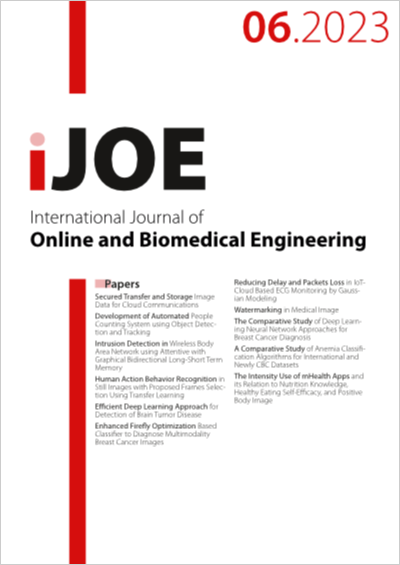Reducing Delay and Packets Loss in IoT-Cloud Based ECG Monitoring by Gaussian Modeling
DOI:
https://doi.org/10.3991/ijoe.v19i06.38581Keywords:
ECG, IoT, Real-time remote monitoring, Healthcare system, MQTT, HiveMQ, Gaussian modelling, Fog computingAbstract
Abstract— Health monitoring based on the internet of things (IoT) and cloud computing is regarded as a hot topic to research. However, such systems often face issues with delay and throughput due to the large amount of data that must be transmitted from sensors to the cloud. One important type of data for health monitoring is Electrocardiogram (ECG) signals, which generate a large amount of data to be transmitted. This research treats this problem by modelling these signals in order to reduce their size using Gaussian approximation. The cloud server is an MQTT broker to which the sensors publish their data via a gateway. The Gaussian parameters are calculated in the gateway, which act as a Fog layer, before published to the broker. The monitoring devices can subscribe to the broker and access the transmitted data. Our experiments were conducted using the MIT–BIH dataset and a real broker (HiveMQ). The results showed that the system was able to significantly reduce delay in transmitting data and prevent loss of information. Without using the Gaussian approximation technique, the system was only able to monitor a limited number of patients (17 for Qos1 and 23 for Qos0) without losing information. However, when using the Gaussian approximation model with five functions, the system was able to monitor many more patients (78 for Qos1 and 100 or more for Qos0) without losing any data.
Downloads
Published
How to Cite
Issue
Section
License
Copyright (c) 2023 Ahmed A. Fadhel, Hamid M. Hasan

This work is licensed under a Creative Commons Attribution 4.0 International License.



